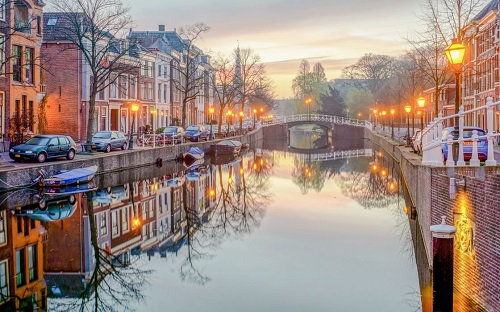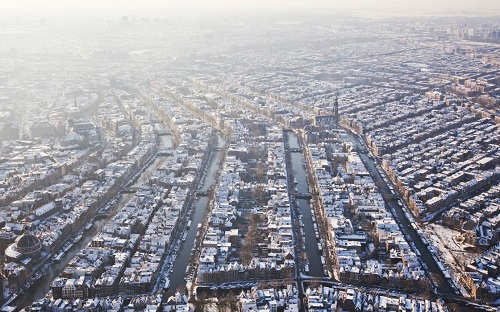
For as long as they have been pumping water out of the lands in Holland, they have been building canals for travel, irrigation, and water removal. The famous canals of Amsterdam were a result of good city planning (to keep our Dutch friends’ heads above water), and easily serve as additional streets for transportation. Leiden and Delft were also designed with canal transportation in mind. These days, not only are there canal buses that navigate the waterways, but restaurant boats, houseboats, and all manner of other boat types frequent these often semi-circular canals. As a nice touch of resourcefulness, the outer canals surrounding the city served as a kind of moat to protect the city from foreign invaders.
The canal layout in the modern Dutch city
Amsterdam was created with canals of concentric circles facing the IJ Bay in the seventeenth century. Three canals were designed with residential development in mind. The fourth outermost one was created for defense as well as excess water management. These waterways were interconnected by radiating canals, forming a fan shape. Construction was done from west to east, with the eastern area took a long time to irrigate. Delft is formed in a rectangle with a grid layout of canals. Java-eiland in Amsterdam is a good place to see more modern canal technology.

Authentically Dutch
If you are visiting Amsterdam or other major cities in Holland, you will want to spend some time on the canals. The history of canals is deeply integrated with the cities and tours, and most tour packages include the canals. If you just want the opportunity to see the canals from the water, taking a water taxi, especially in Amsterdam, can be a great way to see them while saving some money for the rest of your tour.
